Bangles are traditional pieces of jewelry that are worn on the wrists of women of all ages in India and are believed to bring good fortune and wealth.
Bangles were first discovered in Mohenjo Daro, exhumed near the Indus River, and presumed to have existed for around 5000 years. Bangles were found in the hands of the famous "Dancing Girl". This signifies that this fashion piece has been worn since ancient times.
Bangles have quite a special value for Indian women. Many Indian women take great delight in wearing sindoor, mangalsutra, and bangles as marital symbols. While sindoor and mangalsutra are being phased out and have lost popularity in current times, bangles remain a tradition and "in-style." Due to the distinctive patterns and contemporary handiwork on bangles, the tradition has survived.
Bangles come in a variety of styles. The design, color, and size vary depending on ethnicity. Some types of bangles are still in trend and are styled with western outfits-
1 - Kangans- Kangans are essentially a bangle assortment that is somewhat thicker than a standard bangle. Kangans are available in a wide range of materials, including gold, silver, metal, wood, and others. Kangans are paired with western dresses to make the overall look elegant and ethnic at the same time. These are also known as “kada”. Kadas are worn by men as well. 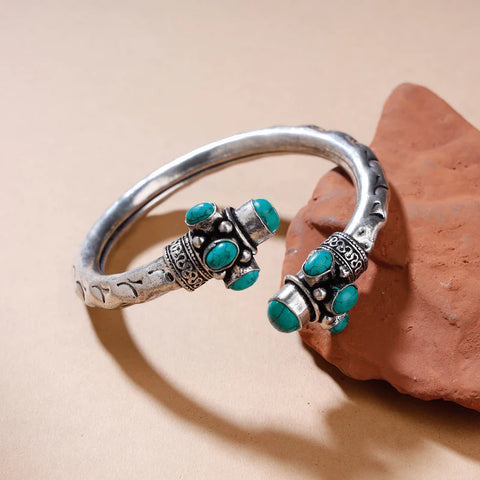
This one, for example, has a touch of modern design with traditional Andhra Pradesh kalamkari pen works that can be worn with Kurtis and Salwar suits.
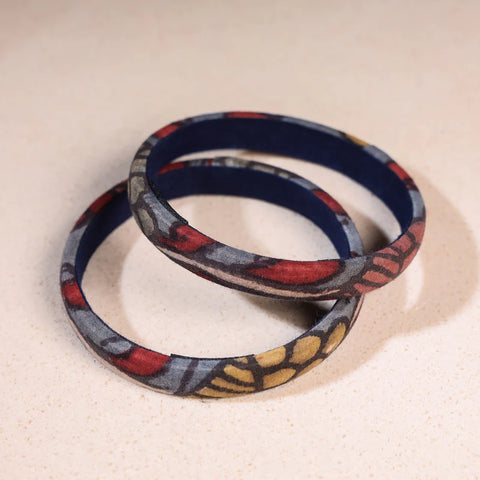
2- Wrist trinkets- It is made of metal and contains pebbles and shells to enhance its design. Their design complements the overall aesthetic. Though not many women wear this with bridal attire, it can be easily carried off with casual western outfits.
3- Baju/ Arm bands- Bajuband, also known as Ananta and Angada in various regions of India, is a magnificent piece of jewelry that adds another depth to an Indian woman's traditional attire. It is an armlet that is worn on the biceps, and women nowadays prefer to wear it with Indo-western Kurtis and gowns.
Bangles are the most essential accessory in an Indian bridal outfit. Given that India is such a multicultural country, the following are a variety of traditional bangles and handicraft interpretations as seen on an Indian woman according to her culture-
1-Gold is considered highly valuable in the southern states. Green represents fertility and prosperity, so brides in certain southern cultures wear green-colored glass bangles with gold ones. Kerala bangles are called Palakka bangles, which are gold bangles stuffed with green Palakka stones. Palakka bangle’s patterns are influenced by nature, and one can easily observe the design of many leaves on these bangles. Some of these accent beadwork bangles can be paired between the bridal bangle set-
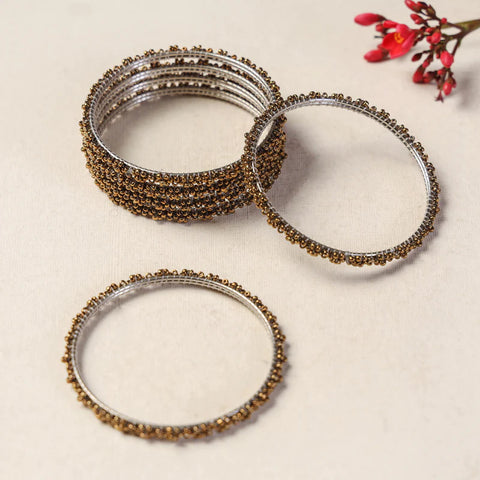
2-A set of bangles is called a "chooda". In Maharashtra, the bride wears an odd number of green glass bangles. Green represents auspiciousness and fertility. They wear this with patlya (solid gold bangles) and tode (carved kadas). The groom's family generally gifts the gold bangles to the newlywed bride. 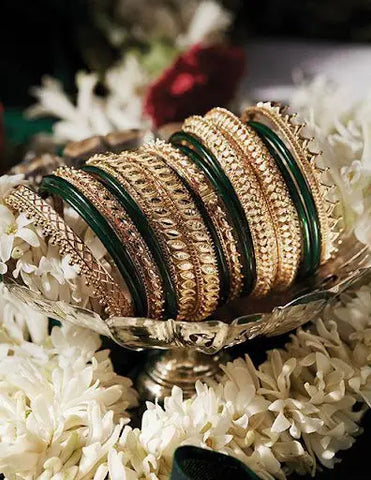
3-Brides-to-be in Punjab wear ivory and red bangles known as chooda. The bride's maternal uncle gifts her with a set of chooda. She is expected to wear these bangles for a set amount of time, which can be as few as forty days or as long as the specific family's custom allows. These gorgeous-looking choodas have ‘Kaliras’ attached to them, which are umbrella-shaped hangings.
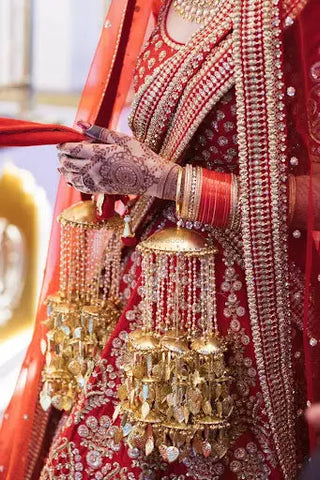
4-Brides in Rajasthan and Gujarat also wear ivory bangles called chooda. In Gujarat, the bride's maternal uncle presents her with the chooda, as well as the bridal silk saree with the crimson border, at a ritual known as Mamera. Rajasthani choodas are made of lac and have diamonds or pearls embedded on the top of the bangles. ‘Hathphool’ is one such bangle bracelet that has a ring and a chain attached to it.
This one is the Patwa thread work and bead work of Rajasthani artisans. Patwa bangles are made from cotton threads & glass beads handcrafted by the master craftsmen Kailash Patwa. Patwa is a thread craft which originated in Rajasthan and is now practiced in parts of Rajasthan.
5-In Bengal, brides are given Sankha-pola & loha by their parents & in-laws respectively. Sankha is a pair of white conch shell bangles, Pola is a pair of red coral bangles, and Loha is a single simple iron bangle.

These white and red bangles are worn on both hands, while loha is only worn on the left hand. The red color denotes energy and prosperity, while white brings a sense of new beginnings.
6-Hyderabadi bangles are made up of glass and covered in a lacquer coating. Brides are seen wearing colorful bangles with stunning geometric and floral motifs adorned with white pearls. Some of these are the beadwork bangles made by artisans of Uttarpradesh that can be paired well between Hyderabadi bridal gold bangles to make the bangle set look more brighter and colorful-
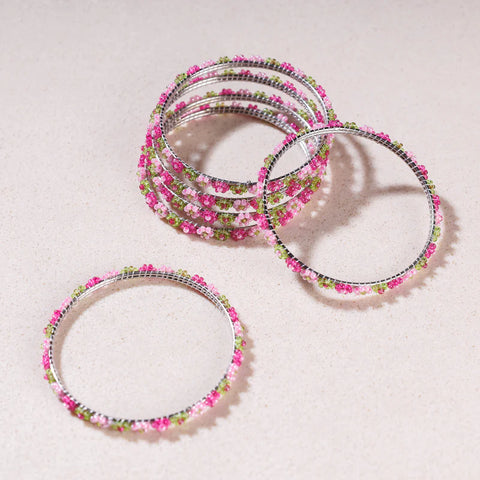
One of Sarojini Naidu's most renowned and well-known poems discusses the significance of bangles in Indian society. The poem delves into the lives of Indian women, Indian culture, and women's customs. It centers around bangles, which are an essential accessory for women's embellishment in Indian society. The poet compares the childhood, teenage, marriage life, widowhood, and finally death of an Indian woman and how every stage of her life is complemented with bangles. Bangles are therefore essential to every Indian woman. There are several ways to wear this fashion accessory now, which reflects how our Indian women prefer to keep traditions alive even in modern times. The only thing that has changed is that bangles do not identify a woman's cultural or marital status in today's world. They are actually a piece of fashion that accentuates their beauty and serves as a statement piece of their freedom in identifying themselves as however, they wish to in Indian society.
 Verified Purchase
Verified Purchase
















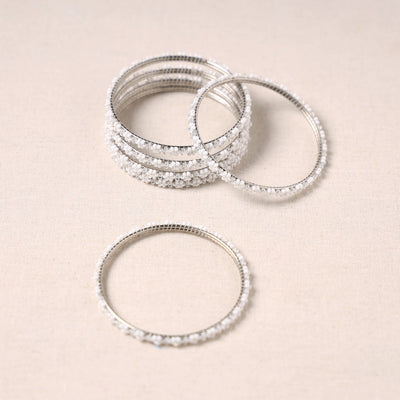










Leave a comment (all fields required)